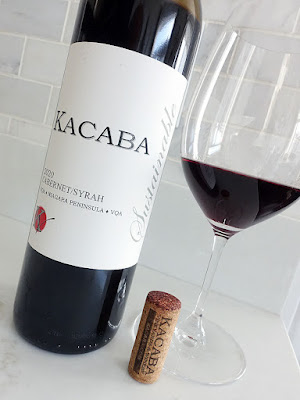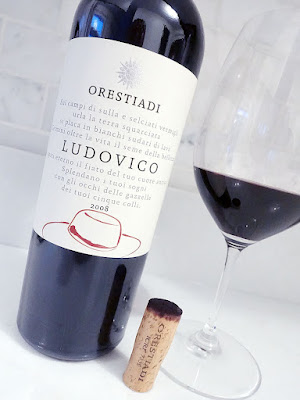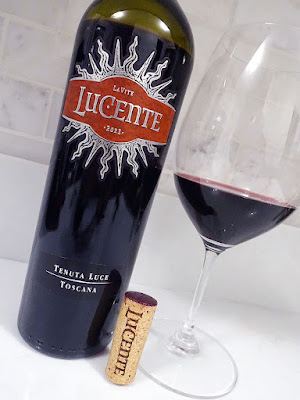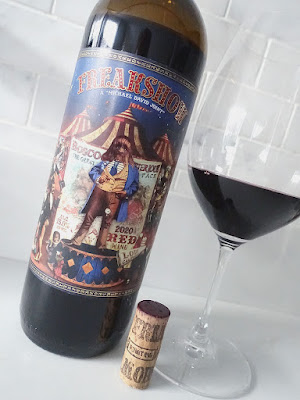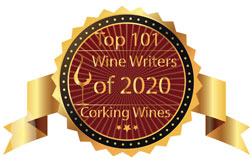red wine review is a delicious Portuguese red blend crafted with 4 grape varietals that arrived at the LCBO as part of the recent LCBO VINTAGES New Release Collection.
It is produced by Herdade do Sobroso, an estate winery situated near the pretty little town of Vidigueira in the Alentejo region of Portugal. It is bordered by the Mendro mountain range to the north, the Guadiana River to the east, and to the south is a vast plain that stretches as far as the eye can see. Set among the vast golden plains, cork trees, olive trees, and vineyards of the early 16th century, Vidigueira has a long and rich history and is noted for being the place where Vasco da Gama lived happily with his family for some years after discovering the sea route to India. The landscape around Herdade do Sobroso has many historical references, and today it is strongly influenced by its proximity to the Alqueva Dam - Europe's largest artificial lake.
Today, Herdade do Sobroso is a distinctive property of 1,600 hectares that is heavily populated with cork trees. In recent years, over 600,000 cork trees were planted on the banks of the Guadiana River next to the Alqueva Dam, in the DOC Vidigueira Region, where the Upper and Lower Alentejo converge. The property was acquired by architect António Ginestal Machado, and then handed down to his daughter, Sofia, and her husband, Filipe Teixeira Pinto. The couple developed the project as a wine and country house that bonded wine production with architectural quality to become a dynamic presence in the region. Herdade do Sobroso arose from the love of Alentejo, a deeply-rooted connection to the land, a passion for wine, and a strong desire to create something that can be handed down to future generations.
This red wine is a blend of 30% Aragonez (Tempranillo), 30% Alicante Bouschet, 20% Cabernet Sauvignon, and 20% Syrah that was grown on loam-clay soil at their Sobroso Vineyard along the banks of the Guadiana River, in the Alentejo wine region of southern Portugal. The grapes were hand-harvested and transported to the winery, upon which they were fermented at a controlled temperature in stainless steel, followed by a post-fermentation maceration for approximately 20 days. The wine was then aged in 500 Litre French oak barrels for 6 months.
The growing season in 2021 provided cooler conditions and resulted in a later harvest throughout Portugal, while yields were up compared to the prior year. In Alentejo, it is described as an almost brilliant year that began with winter rains replenishing water reserves in the soil, followed by cooler than usual conditions, which resulted in less irrigation. Spring was warm and dry - the perfect conditions for flowering and fruit setting. Summer was much milder than usual, and when combined with the cool nights, this allowed the grapes to ripen slowly and steadily. A heatwave at the beginning of August caused the vines to temporarily shutdown and halted ripening, but this was relieved once temperatures dropped by mid-August. Overall, the quality of the grapes is very good and resulted in some exceptional wines. Let's see how this 2021 Alentejo red from Portugal is tasting tonight...
This blend of 30% Aragonez (Tempranillo), 30% Alicante Bouschet, 20% Cabernet Sauvignon, and 20% Syrah has a fragrant, medium-high intensity nose that is enticing with ripe dark red/black cherry, blackberry, plummy, currant, cassis, and peppery spice aromas with accents of savoury, earthy oak, and meaty notes. It's medium+ bodied and dry with delicious dark fruits, blackberry, black cherry, plum, and spice flavours surrounding a core of savoury earth. It has fresh, juicy, and lively acidity, along with ripe, smooth, and fine-grained tannins. Dark berry and plummy notes taper to savoury earth, oak, and cocoa on the long and juicy finish. Enjoy this recommended buy over the next few years. Score: 89 pts
Other delicious wines by Herdade do Sobroso can be ordered through their Agent - Eurovintage Wines & Spirits.
It is produced by Herdade do Sobroso, an estate winery situated near the pretty little town of Vidigueira in the Alentejo region of Portugal. It is bordered by the Mendro mountain range to the north, the Guadiana River to the east, and to the south is a vast plain that stretches as far as the eye can see. Set among the vast golden plains, cork trees, olive trees, and vineyards of the early 16th century, Vidigueira has a long and rich history and is noted for being the place where Vasco da Gama lived happily with his family for some years after discovering the sea route to India. The landscape around Herdade do Sobroso has many historical references, and today it is strongly influenced by its proximity to the Alqueva Dam - Europe's largest artificial lake.
Today, Herdade do Sobroso is a distinctive property of 1,600 hectares that is heavily populated with cork trees. In recent years, over 600,000 cork trees were planted on the banks of the Guadiana River next to the Alqueva Dam, in the DOC Vidigueira Region, where the Upper and Lower Alentejo converge. The property was acquired by architect António Ginestal Machado, and then handed down to his daughter, Sofia, and her husband, Filipe Teixeira Pinto. The couple developed the project as a wine and country house that bonded wine production with architectural quality to become a dynamic presence in the region. Herdade do Sobroso arose from the love of Alentejo, a deeply-rooted connection to the land, a passion for wine, and a strong desire to create something that can be handed down to future generations.
This red wine is a blend of 30% Aragonez (Tempranillo), 30% Alicante Bouschet, 20% Cabernet Sauvignon, and 20% Syrah that was grown on loam-clay soil at their Sobroso Vineyard along the banks of the Guadiana River, in the Alentejo wine region of southern Portugal. The grapes were hand-harvested and transported to the winery, upon which they were fermented at a controlled temperature in stainless steel, followed by a post-fermentation maceration for approximately 20 days. The wine was then aged in 500 Litre French oak barrels for 6 months.
The growing season in 2021 provided cooler conditions and resulted in a later harvest throughout Portugal, while yields were up compared to the prior year. In Alentejo, it is described as an almost brilliant year that began with winter rains replenishing water reserves in the soil, followed by cooler than usual conditions, which resulted in less irrigation. Spring was warm and dry - the perfect conditions for flowering and fruit setting. Summer was much milder than usual, and when combined with the cool nights, this allowed the grapes to ripen slowly and steadily. A heatwave at the beginning of August caused the vines to temporarily shutdown and halted ripening, but this was relieved once temperatures dropped by mid-August. Overall, the quality of the grapes is very good and resulted in some exceptional wines. Let's see how this 2021 Alentejo red from Portugal is tasting tonight...
Tasting Note:
HERDADE DO SOBROSO RED 2021 - DOC Alentejo, Portugal (#306563) (XD) - $19.95This blend of 30% Aragonez (Tempranillo), 30% Alicante Bouschet, 20% Cabernet Sauvignon, and 20% Syrah has a fragrant, medium-high intensity nose that is enticing with ripe dark red/black cherry, blackberry, plummy, currant, cassis, and peppery spice aromas with accents of savoury, earthy oak, and meaty notes. It's medium+ bodied and dry with delicious dark fruits, blackberry, black cherry, plum, and spice flavours surrounding a core of savoury earth. It has fresh, juicy, and lively acidity, along with ripe, smooth, and fine-grained tannins. Dark berry and plummy notes taper to savoury earth, oak, and cocoa on the long and juicy finish. Enjoy this recommended buy over the next few years. Score: 89 pts
Other delicious wines by Herdade do Sobroso can be ordered through their Agent - Eurovintage Wines & Spirits.



